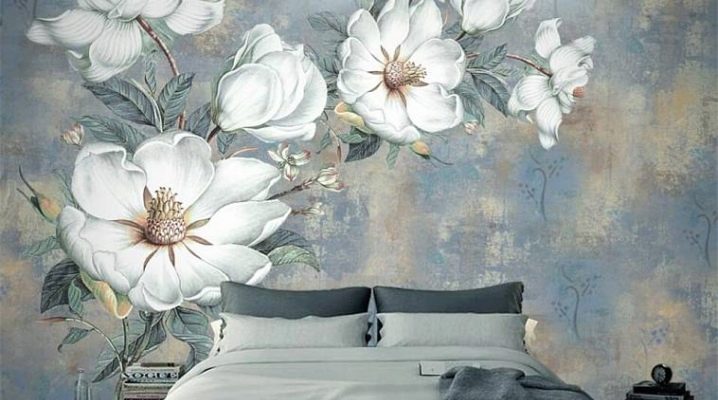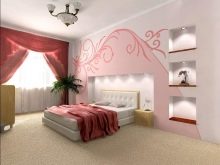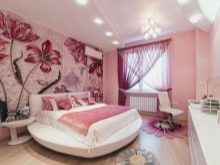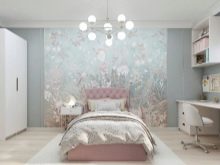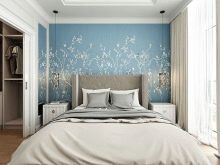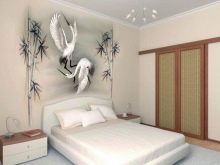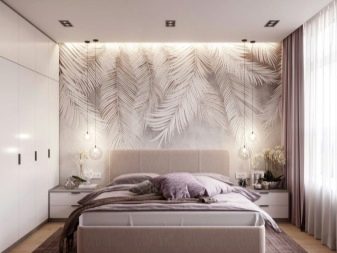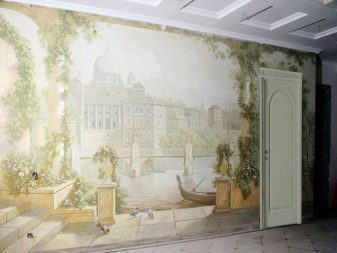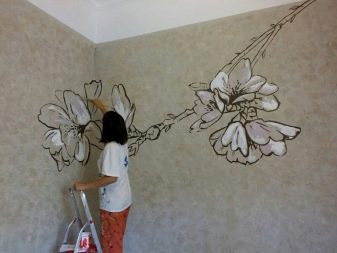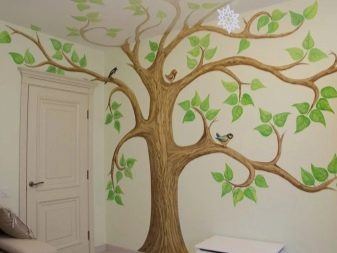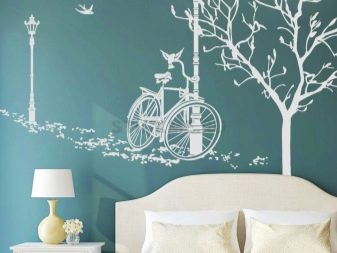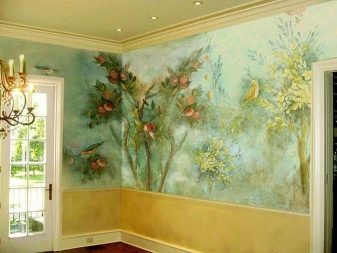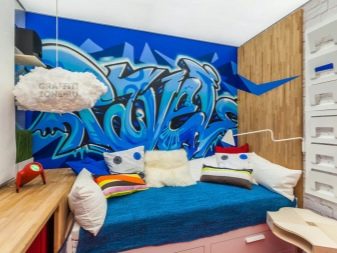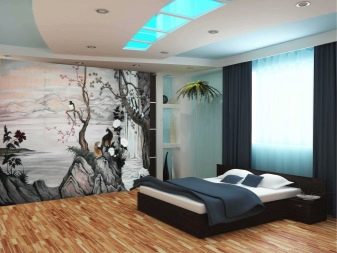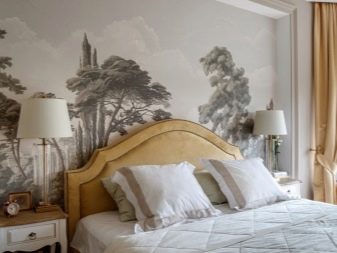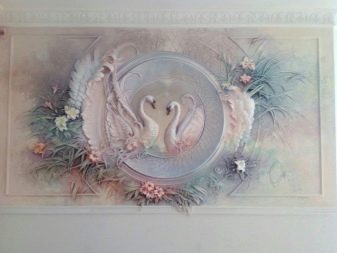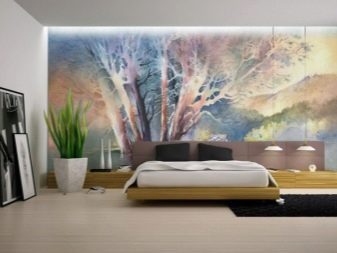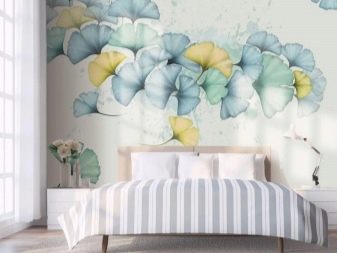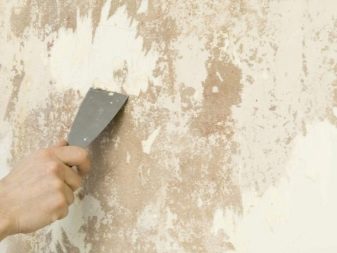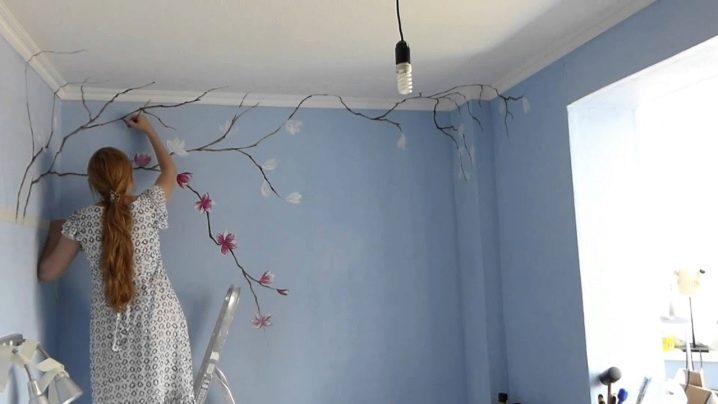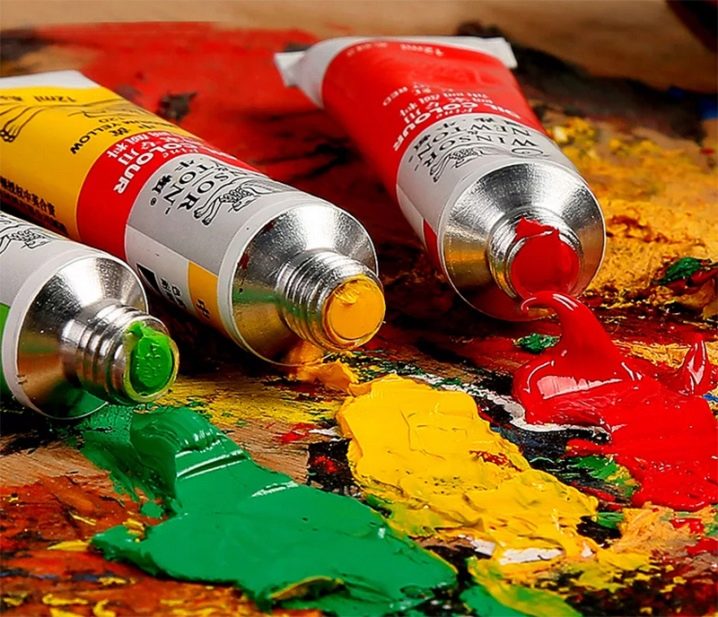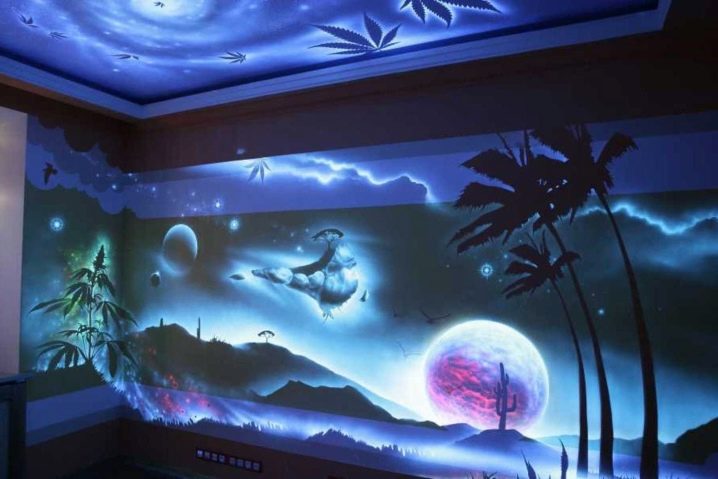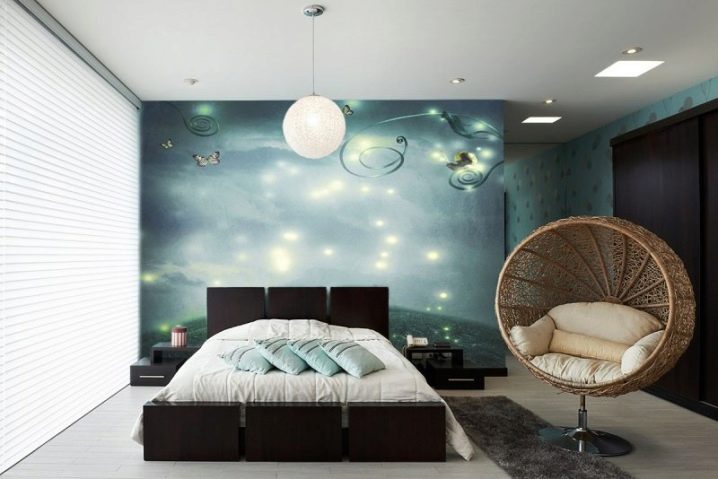Painting the walls in the bedroom
Wall painting is not an easy process that requires certain skills. And when it comes to the bedroom, then you need to show special responsibility. A person spends almost a third of his life in a dream. The design of the painting and its care are important factors for a comfortable and good rest.
Peculiarities
Any drawing on the wall in the bedroom will be unique. The technique of execution, themes, colors - all these are the distinctive features of each painting. A correctly selected image will not only be the central part of the interior, but also set the right mood for the room.
The color scheme of the image directly depends on the purpose of the room and the illumination. For a bright bedroom, cool shades - blue and green - are best suited. For dark - beige and white.
Bright colors in the interior of the bedroom are rarely used - they increase efficiency and do not favor relaxation.
Choosing a painting in a bedroom for adults, people start not only from their favorite image, but also from the parameters of the room. This design is suitable for voluminous rooms with large walls. Correctly selected decor can visually increase the space, hide the imperfections of the walls.
Styles and options for painting
The bedroom is a place to relax, which means the atmosphere should be conducive to relaxation. In no case should you choose bright painting or images with aggressive overtones.
For the room, drawings in the Japanese style are suitable: images of sakura or mountains. Calming pictures in a marine style, painting with flowers or trees also look great. Hand-painted white walls look impressive and unique.
There are various techniques for performing artistic painting, from which everyone can choose the right one. They all have distinctive features.
Classic style
From the point of view of technology, it is considered the simplest painting. Drawing requires brushes, paints, and a little imagination. Of course, it is quite difficult to create a picture without experience - it is easier to turn to professionals.
Drawing by fragments
This painting can be done without special skills. The working surface is divided into equal fragments and a picture is drawn in parts. The final image is combined into a general painting, and the ruler becomes invisible.
Stencil technology
An easy way to create a painting with complex patterns. The image is simply transferred from the stencil to the wall.
Fresco
The drawing is applied to wet plaster. The finished work is covered with a calcium film for better preservation.
Graffito
Painting is done only by professionals. Plaster of different colors is applied to the wall in layers, and the pattern is scratched out from above.
Grisaille
Such a painting can only be done by masters. The drawing is done using different shades of paint of the same color.
Bas-relief
The painting is applied to a previously prepared relief. It is created by specialists using plaster.
Airbrushing
Allows you to draw small details with thin lines. The image is created with an airbrush filled with water-based paint. The painting is detailed and effective. Performed by professional artists.
Where can you draw?
The mural will look great anywhere in the bedroom. Most often, images are placed above the bed. Above the headboard, the painting looks the most advantageous, it draws attention to itself. Also, the image can be placed on corners or window and door frames.
Professionals will be able to complete the drawing so that it will hide the defects of the room, highlighting the advantages favorably.
You can prepare a surface for work with your own hands. The wall is cleaned of dust, dirt, thick layers of plaster and other unnecessary materials. The main thing is that the surface is smooth - nothing should interfere with the drawing of details.
What paints are used?
After choosing the image and the place of the painting, the question arises about the materials for painting. Professional artists use acrylic and water-based composition. But there are other paints for painting walls.
Gouache and watercolor
Cheap paints, easy to use for beginners. Watercolors can make beautiful stains or abstraction, with gouache - clear and bright strokes.
Pros:
- paints do not emit harmful substances;
- are odorless;
- have low cost and are easy to use.
Minuses:
- low reliability - paints can deteriorate from wet cleaning;
- a protective coating is required;
- high water consumption.
Acrylic and water-based formulations
Most often used by professional artists. You can add filler to the paint and make the drawing three-dimensional. In addition, the paint is suitable for all primed surfaces.
pros:
- paints can imitate the technique of painting with watercolors or oils;
- when adding different fillers, additional effects are created;
- suitable for all surfaces;
- are odorless;
- do not emit harmful substances.
Minuses:
- a thick layer of paint may crack;
- dried paint crumples;
- when diluted with water, the paint falls unevenly;
- dries only at high temperatures.
Colors for acrylic
Needed to obtain deeper shades of color. Miscible with acrylic and alkyd paints.
pros:
- one bottle is enough for a large volume of paint;
- colors are stored at temperatures up to -50 ° С;
- have a low cost.
Minuses:
- used to obtain only faded shades;
- the painting will be smeared if you overdo it with volume;
- are not used as an independent material.
Alkyd enamel
Durable material for use in dry rooms only. It lays down quickly, has a low consumption.
pros:
- dries up for a long time, which allows you to correct inaccuracies in the drawing;
- has a bright color;
- durable.
Minuses:
- poisonous, work is carried out in a respirator;
- high price;
- must be diluted with solvent.
Oil and tempera
The properties are similar to acrylic, but they are more expensive. A picture made of such paints does not fade for a long time.
pros:
- you can draw not only with brushes, but also with spatulas;
- dry up for a long time, which allows you to correct inaccuracies in the drawing;
- the painting turns out to be bright.
Minuses:
- toxic;
- must be diluted with a solvent;
- have a high cost;
- it will be difficult for a beginner to create a beautiful drawing.
Luminous and fluorescent
Such paints accumulate light, emitting it in the dark for about 8 hours. If the patterned surface is on the sunny side, the image may “burn”.
pros:
- glow brightly in neon shades;
- "Charge" independently from the sun's rays;
- make it possible to create a unique image.
Minuses:
- only glow in the dark;
- do not have their own color, are layered on top of other paints;
- expensive.
Even high-quality paints must be covered with a protective layer. This will prevent damage to the painting.
How to care?
Painting cleaning largely depends on the paints used and the technique chosen. It is permissible to wipe the varnished surface with a damp cloth or a brush with soapy water. The same applies to paints that will not wash off when cleaning. Do not use abrasive products. Strong impact on the protective layer can damage the image.
